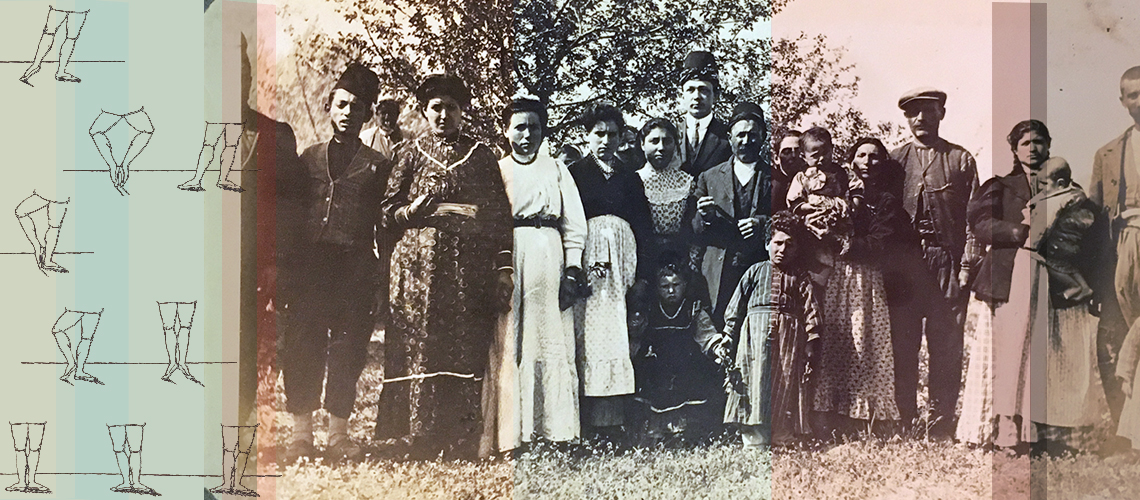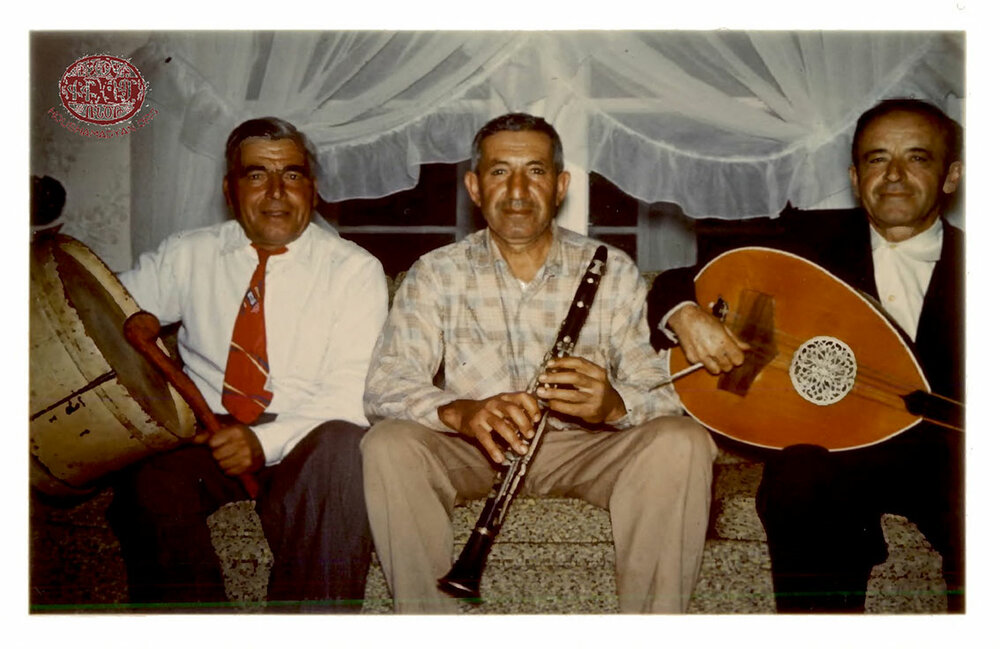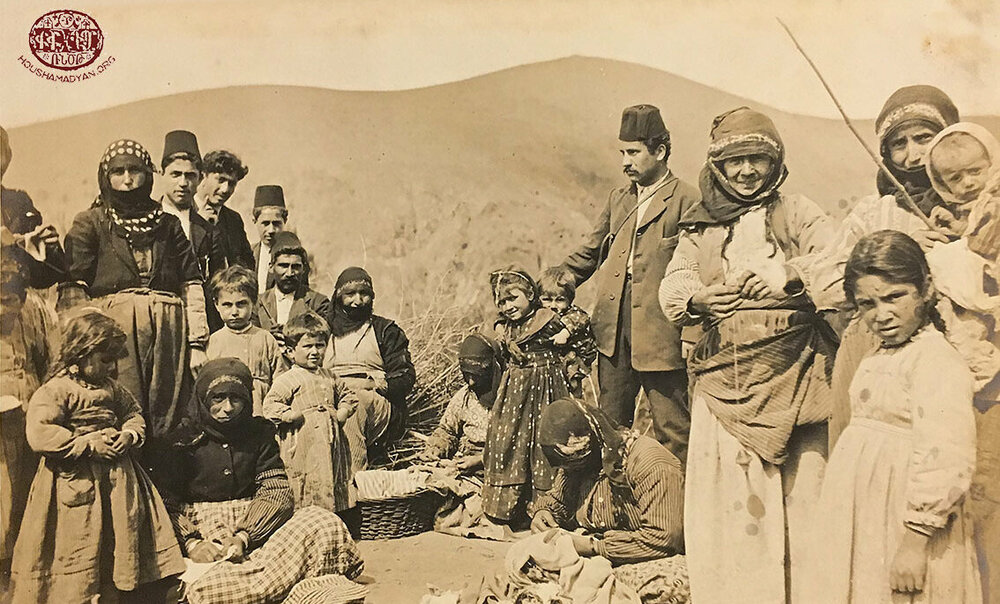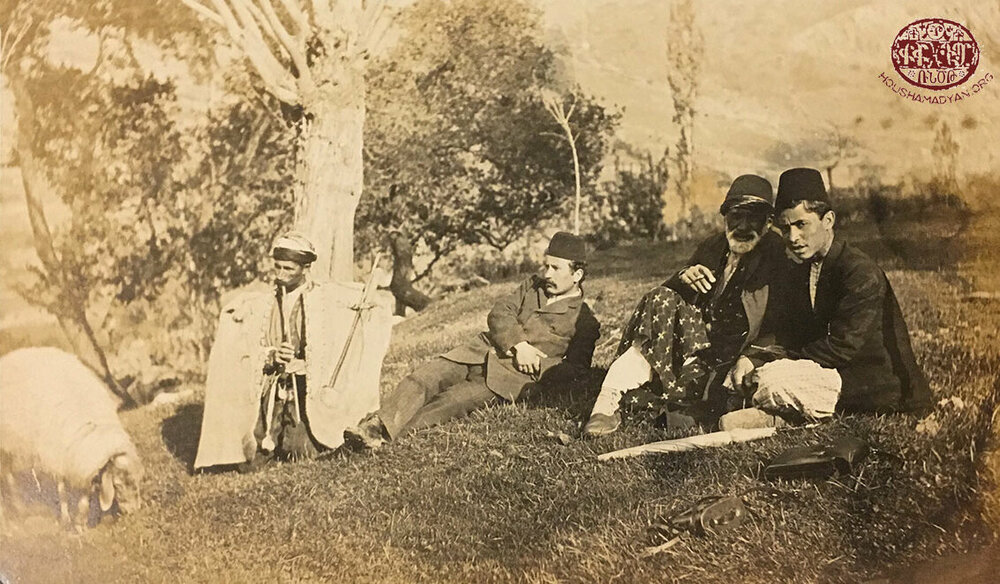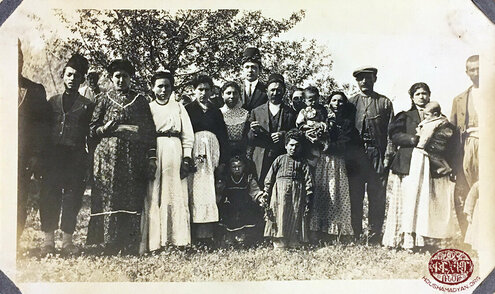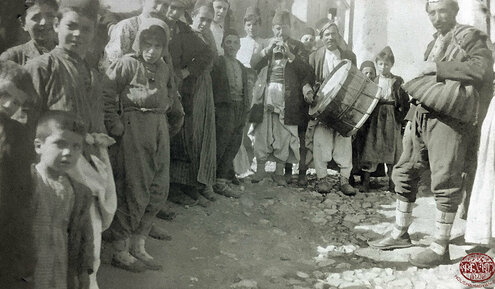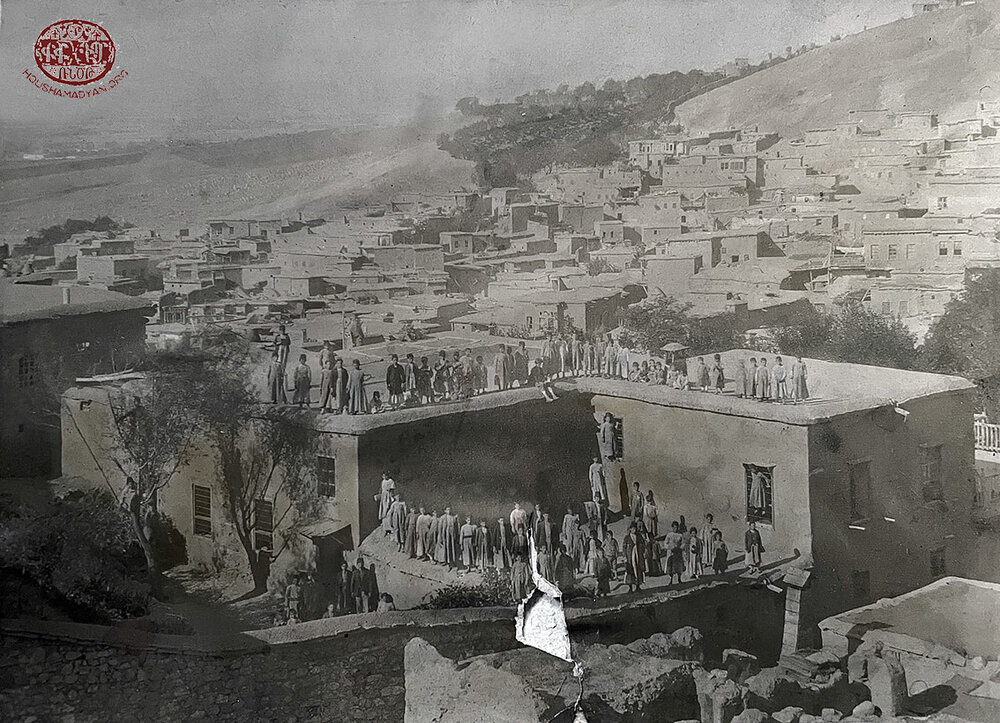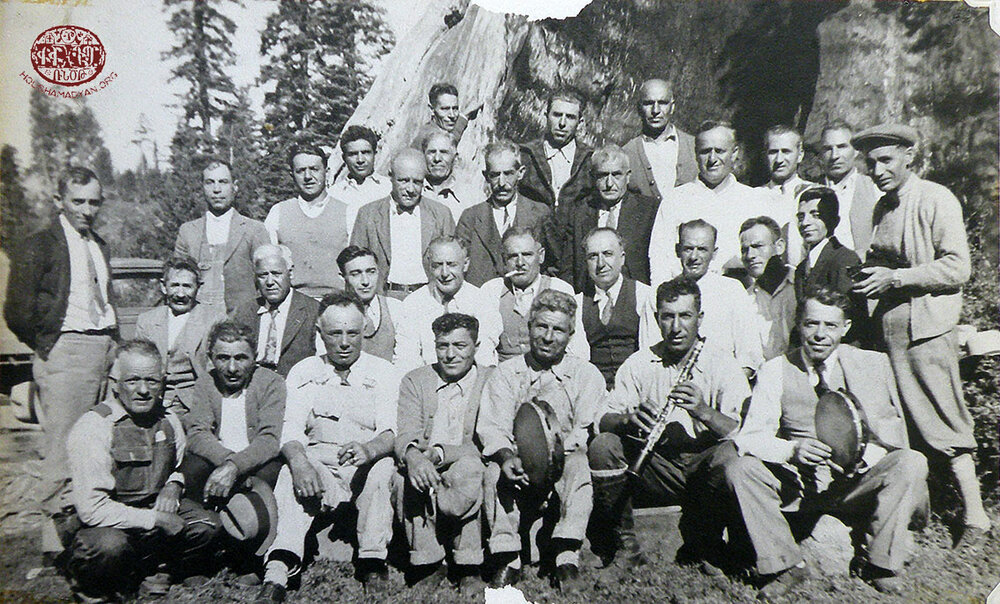Kharpert – Dzaner Bar (Horoum Havasi)
17/01/22 (Last modified 17/01/22)

This section of our website aims to document and share performances of various traditional Armenian dances that have been preserved by Diasporan communities in the United States. To this end, Houshamadyan is partnering and collaborating with a group of Armenian dance experts who have produced appropriate dance notations for documentation. This group consists of Carolyn Rapkievian (of Bar Harbor, Maine), Susan and Gary Lind-Sinanian (of Watertown, Massachusetts), Tom Bozigian (of Los Angeles, California), and Robert Haroutunian (Sunyside, NY).
**************
Dzaner Bar means "Heavy Dance" or "Difficult Dance" in Armenian. Another name of the dance is "Horoum Havasi" or 'Horoum Oyoun Havasi", which is a Turkish name that means "Melody of the Horoum Dance". Dzaner Bar was brought to the United States by Armenian and Assyrian immigrants from the region of Kharpert/Harput, who settled in the San Joaquin valley of central California during the early 1900s. As a youth in the early 1950s, Tom Bozigian observed Armenian and Assyrian immigrants at functions performing solo two-step turns and claps to this music played by Hovagim Der Hagopian. Bozigian learned the dance at the 1964 World’s Fair in New York from Armenians and Assyrians in attendance.
FORMATION: Mixed (men and women) line, little finger-hold at shoulder height with the leader at the right.
RHYTHM: 9/8 with accents: 1-2, 1-2-3, 1-2, 1-2

Dzaner Bar | Demonstration and Tutorial

Variation #1 - Begin dance on 3rd measure
1) Moving right, step with the right foot to the right as arms begin circle clockwise 3/4 (counts 1-2, 1-2-3) touch left foot beside the right as arms complete 3/4 clockwise circle (counts 1-2, 1-2)
2) Step with the left foot across the right as arms square up (counts 1-2, 1-2-3-), step on the right foot to right as arms makreech (move like windshield-wipers) to the right (counts 1-2), step left across right as arms makreech left (counts 1-2)
3) Repeat measures 1-2
4) Repeat measures 1-2 again
5) Step forward on right as arms makreech right (counts 1-2, 1-2-3) continue forward left-right with arms (counts 1-2, 1-2)
6) Repeat measures 3 with opposite footwork and arms
7) Repeat measures 5-6 but moving backwards to original perimeter
8) Again, repeat measures 5-6 but moving backwards to original perimeter
*Do Variation #1 five times
Variation #2 with hands free
1) Moving right, step with the right foot to the right, then turn to face center (counts 1-2, 1-2-3) and touch the left foot beside the right foot (counts 1-2 [clapping on count 1], 1-2)
2) Turning right, step left ahead (counts 1-2, 1–2-3) turning right to face diagonally, out step right ahead as left arm raises above head & right arm extends out (counts 1-2) step left ahead (counts 1-2)
*Do Variation #2 four times
1) Kharpert area. Armenian families photographed in nature (Source: Amherst College, Archives and Special Collections, William Earl Dodge Ward Papers).
2) A festive atmosphere with accompanying musicians, most probably in one of the streets of the city of Kharpert/Harput (Source: Amherst College, Archives and Special Collections, William Earl Dodge Ward Papers).
Variation #3
1) Holding fingers again and facing center, step with the right foot to the right (counts 1-2, 1-2-3), touch the left foot beside the right (counts 1-2, 1-2)
2) Repeat measures 1 with opposite footwork and direction (counts 1-2, 1-2-3, 1-2, 1-2)
3) Repeat measures 1 (counts 1-2, 1-2-3, 1-2, 1-2)
4) Do a chassé step to the left (L-R-L) (counts 1-2, 1-2-3, 1-2, 1-2)
Variation #4
Moving to the right, do eight chassé steps to the right beginning with the right foot with makreech arm movements (counts 1-2, 1-2-3, 1-2, 1-2 x 8)
Going back, repeat variation # 1 twice!

Historic recordings of Dzaner Bar
Stepan Simonian
1927 "Roum Makame” (Pharos Records), Stepan Simonian violinist, born in Mezire/Mamuret ul-Aziz (Kharpert Valley), immigrated to Massachusetts.
Reuben Sarkisian
Late 1940s, Dzaner Bar (recorded in Hollywood), Reuben Sarkisian Orchestra, Reuben Sarkisian violinist, born in Mezire/Mamuret ul-Aziz (Kharpert Valley), immigrated to Massachusetts, moved to Los Angeles in the 1940s.
Hovagim Der-Hagopian
1940s-early 1950s (home recording, Fresno, California) Dzaner Bar, Hovagim Der-Hagopian, clarinet, born in Hussenig (Kharpert Valley).

